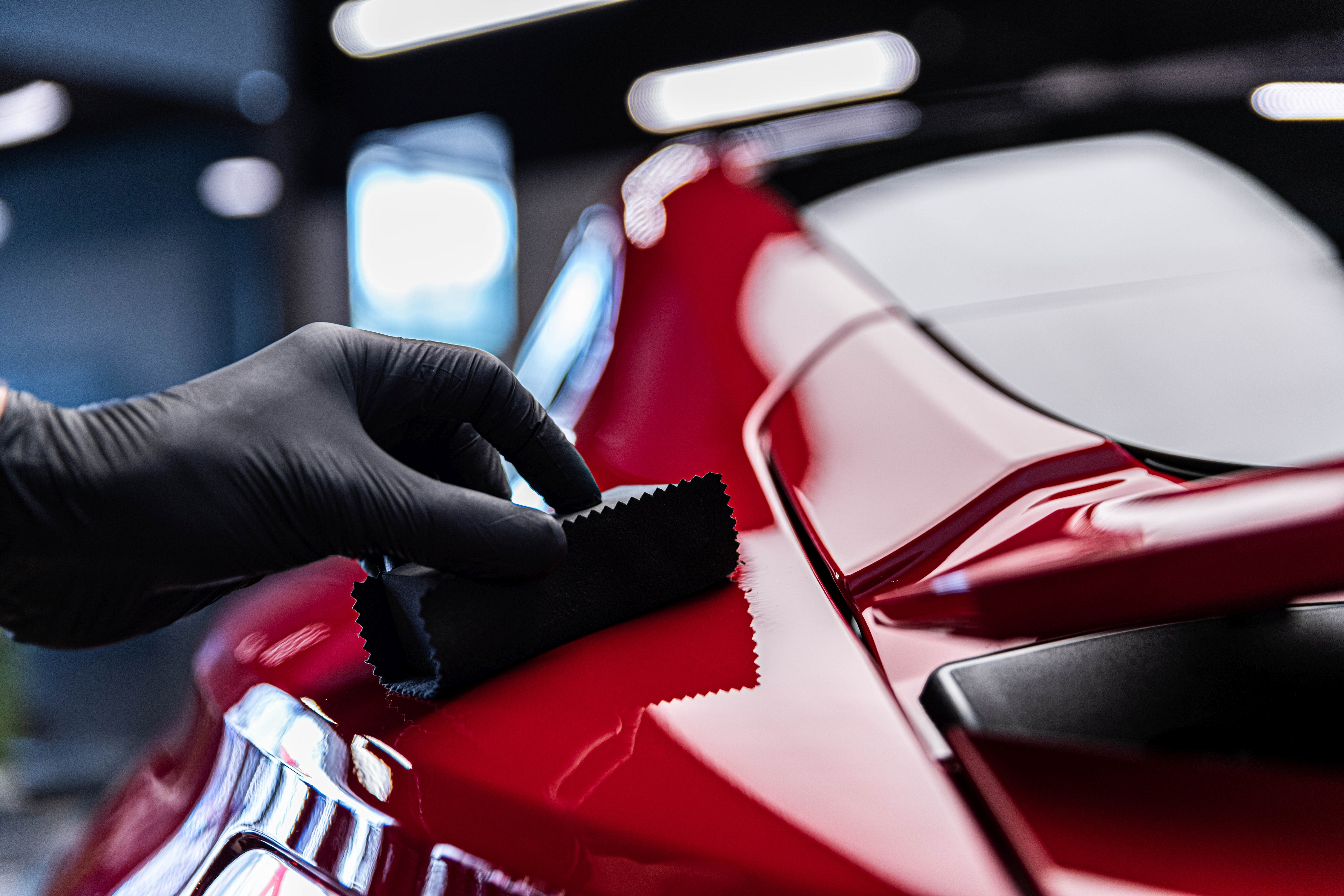Choose premium ceramic coating Sarasota for a flawless finish.
Wiki Article
A Comprehensive Overview to the Kinds Of Ceramic Layer on the marketplace
Ceramic layers have actually arised as a crucial remedy across various markets due to their unique residential properties and applications. As we explore the unique features and applications of these coverings, the ramifications for efficiency and durability come to be increasingly noticeable, raising concerns about which kind could ideal fit your demands.Comprehending Ceramic Coatings
Ceramic coverings are innovative protective remedies that have actually gotten appeal in numerous industries, particularly in vehicle and aerospace applications. These coatings contain a liquid polymer that, when healed, creates a resilient, hydrophobic layer externally of the substrate. This layer provides boosted resistance to ecological pollutants, UV radiation, and chemical exposure, thereby expanding the life and visual appeal of the underlying material.The basic part of ceramic coatings is silica, which adds to their hardness and resilience. The application process typically involves surface preparation, application of the finish, and treating, which can be achieved via warm or UV light. Once healed, ceramic finishes exhibit remarkable bonding buildings, enabling them to adhere highly to a range of surfaces, consisting of steels, plastics, and glass.
Along with their protective features, ceramic layers additionally supply convenience of upkeep. Their hydrophobic nature decreases the adherence of dust and crud, making cleaning simpler and less regular. Overall, the adoption of ceramic finishes represents a considerable advancement in surface protection technology, supplying both functional and visual advantages across multiple industries.
Types of Ceramic Coatings
Various sorts of ceramic coverings are available, each developed to satisfy particular efficiency requirements and applications - Car Detailing. The most usual types consist of:Silica-based Coatings: These coverings primarily contain silicon dioxide and are understood for their longevity and chemical resistance. They are extensively used in vehicle and industrial applications.
Titanium Dioxide Coatings: Prominent for their photocatalytic buildings, titanium dioxide finishes are commonly used in settings where self-cleaning and antifungal properties are preferable, such as in building materials and vehicle surfaces.
Zirconia Coatings: Characterized by their high-temperature stability and thermal resistance, zirconia layers are used in applications such as turbine engines and high-performance auto elements.
Alumina Coatings: Showing outstanding firmness and thermal security, alumina coverings are frequently made use of in wear-resistant applications, consisting of cutting devices and commercial machinery. - ceramic coating sarasota
Crossbreed Coatings: Combining the residential properties of numerous products, hybrid finishings provide enhanced performance qualities, making them ideal for unique and requiring applications.
Each kind of ceramic layer serves distinct functions, allowing individuals to choose the most appropriate service based on particular ecological problems and performance requirements.
Advantages of Ceramic Coatings
Coatings play an essential duty in enhancing the efficiency and durability of surfaces across numerous markets. Ceramic coatings, specifically, deal numerous benefits that make them progressively popular among producers and customers alike. One of the key advantages is their remarkable durability. These finishes are immune to scratches, chemicals, and UV rays, ensuring that the underlying surface stays secured gradually.Along with resilience, ceramic finishings give outstanding hydrophobic homes, allowing for easy cleaning and upkeep. This water-repellent nature reduces the adherence of dirt, gunk, and other pollutants, which can extend the aesthetic allure and performance of the surface. Furthermore, ceramic coverings can significantly improve thermal resistance, making them ideal for applications that sustain high temperature levels.

Application Refine
When applying ceramic finishings, a meticulous approach is important to accomplish optimum outcomes. The application procedure typically starts with extensive surface area prep work. This entails washing, sanitizing, and polishing view the surface area to get rid of all impurities, consisting of dirt, grease, and a knockout post prior waxes or sealants. A clean surface area makes certain appropriate adhesion of the layer.As soon as the surface is prepped, the next action is to apply the ceramic layer. This can be done using an applicator pad or a microfiber cloth, guaranteeing also insurance coverage. It is important to work in small sections to preserve control and avoid early healing. The finish needs to be used in slim layers, as thicker applications can bring about uneven finishes.
After application, the finishing requires a details healing time, typically ranging from a couple of hours to a complete day, depending upon the item. During this moment, it is vital to avoid exposure to dampness or impurities. A mild buffing may be needed after healing to boost the gloss and get rid of any kind of high spots. Following these actions carefully will take full advantage of the performance and long life of the ceramic coating, offering a durable protective layer for the surface.
Upkeep and Long Life
To guarantee the durability and performance of a ceramic layer, routine upkeep is vital. Ceramic coatings, known for their sturdiness and protective high qualities, call for certain care routines to optimize their lifespan and efficiency. The very first step in upkeep entails routine cleaning with pH-neutral soap, preventing extreme chemicals that can deteriorate the covering. It is advisable to clean the vehicle consistently, ideally every 2 weeks, to stop the build-up of pollutants that might jeopardize the finishing's integrity.In enhancement to normal cleaning, regular inspections are crucial. Search for signs of wear or damage, such as hydrophobic homes diminishing or surface area blemishes. If required, a light gloss may be put on invigorate the coating without stripping it away.
Furthermore, the application of a booster spray can boost the covering's hydrophobic results and recover its gloss. This is specifically advantageous for finishes that have been in use for an extensive duration. Inevitably, by sticking to these upkeep techniques, one can significantly prolong the life of a ceramic layer, ensuring that it continues to offer ideal security versus ecological variables and maintain the visual allure of the lorry.
Conclusion

Report this wiki page